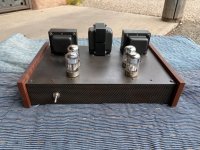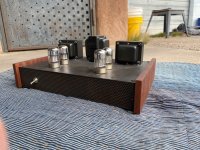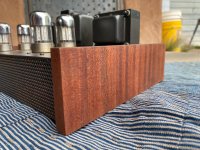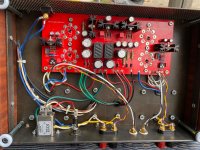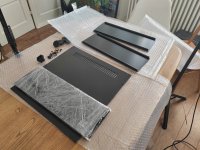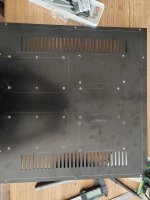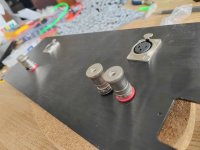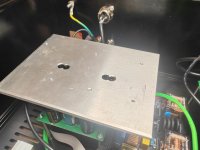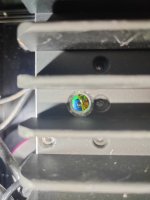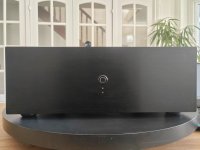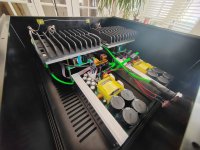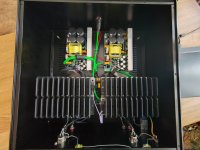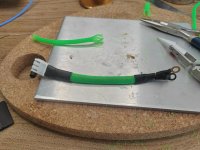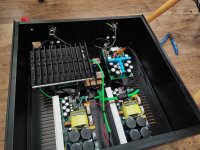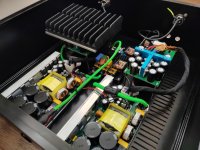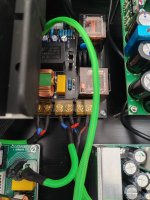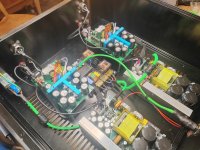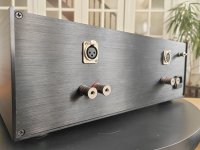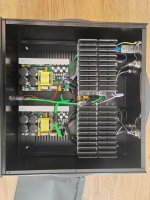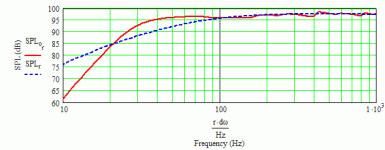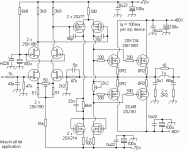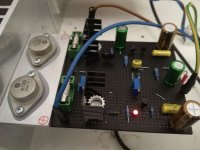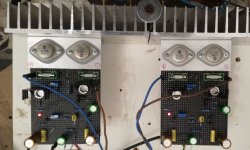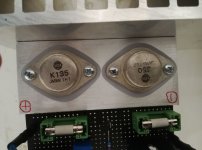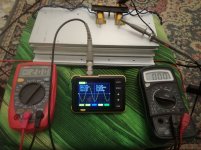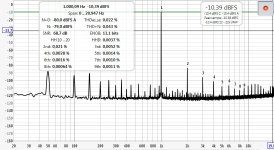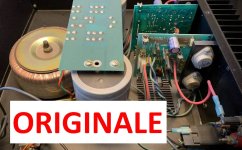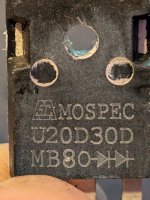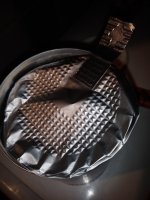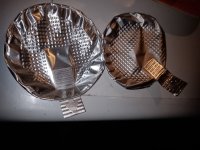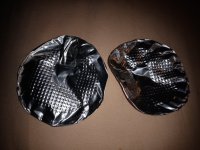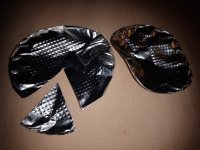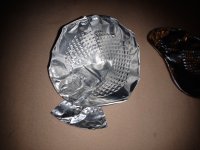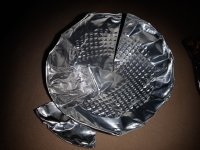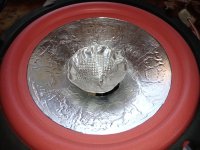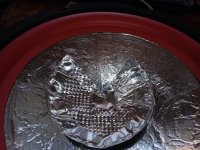Hi there,
since I made already good progress in my modular Arduino based passive pre-Amp project (nearly all stages are in prototyping mode), it is time for me to go to the volume stage.
I want to go with the MUSES72323.
I know that there are already several threats about it, but I did not find one that was really what I am looking for, so I started to dig in by myself.
Goals:
Order a MUSES from Mouser, solder it to a PCB I'll design, control it via Arduino.
Following my idea, I do not want to have anything within my signal way besides the MUSES itself.
I know that the datasheet suggests coupling caps on both sides and output buffers on the output.
But I know that several successful projects (mostly for the MUSES72320) did it without.
But please give me some input!
I know that coupling capacitors are needed to block DC in the signal.
Normally, I expect nearly all source devices to have output coupling capacitors (at least I know that my DIY XONO have some, both of my DAC have it, my old AVR have them (I did not open the new one yet).
So why should I place one in addition here?
Same for the output capacitors.
Most power amps I had on my bench had input coupling capacitors.
And even not, where do we expect the DC to come from?
Or is it known that the MUSES itself tends to create DC?
I simply would prefer to not go, again, into the coupling capacitor rabbit hole + I simply don’t want the pre-amp to change the signal in any way besides the volume.
Also for the buffer, if I want the MUSES to be just a "Volume Pot" I do not see a need.
Specially, when it in fact should just replace a volume pot in an existing chain.
Can you give me some ideas about this?
Regarding the schematics, I went through several other projects and build up this schematic:
Did I miss anything there or do you think it is good to go?
Do I get it right that GND from the Arduino and GND for the Signal / 15V PSU would be completely separated here?
(I managed so far in the pre-amp that Signal and Digital is completely separated (even there will be one jumper point in case there are issues with the separated GNDs).)
I'm happy for your feedback!
And yes, in case that this works we can talk about sending PCBs to others.
Regards,
Felix
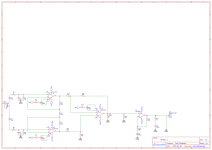

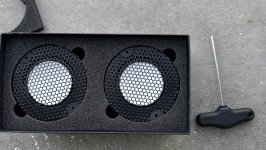
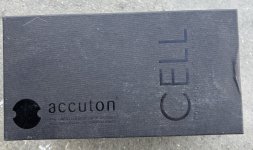
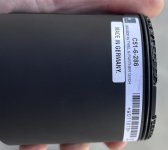
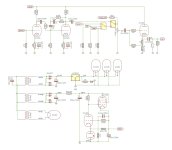
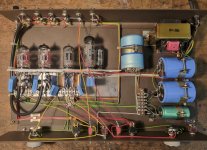
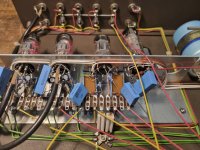

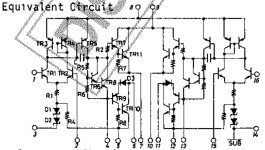
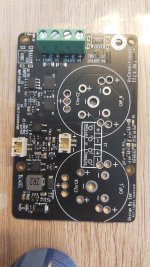
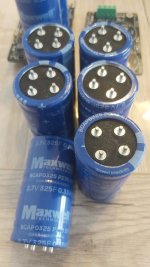
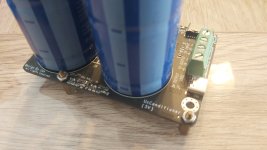
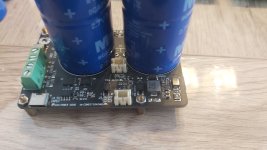
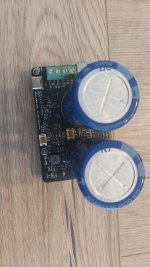
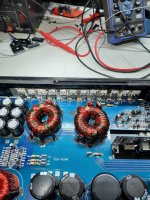
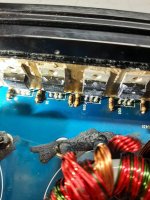
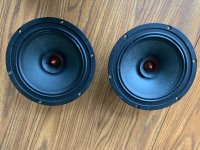
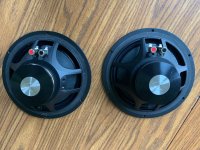

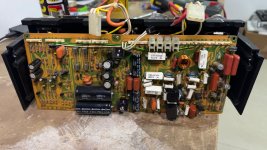
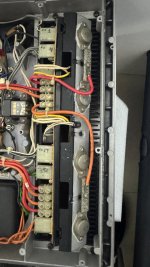
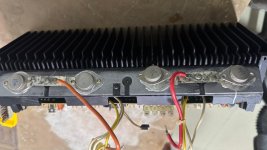


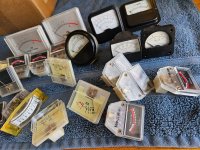
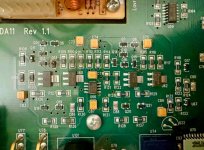
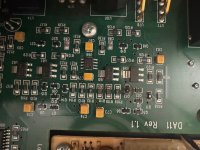
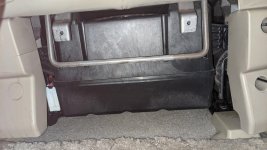
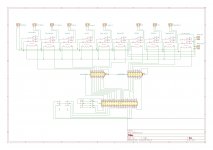
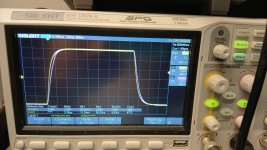
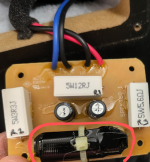

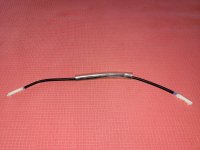
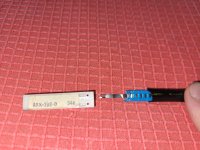
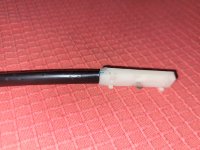
 while simultaneously trying to figure out what the hell i am talking about. If this is doable, i will probably go ahead and buy the pcb's from Peter if they are still available. MY thinking is that this amp would be similar to the J2. I would just do the F5, which is a much easier build according to most, but i have limited funds and think, at least for now, this is what i want.
while simultaneously trying to figure out what the hell i am talking about. If this is doable, i will probably go ahead and buy the pcb's from Peter if they are still available. MY thinking is that this amp would be similar to the J2. I would just do the F5, which is a much easier build according to most, but i have limited funds and think, at least for now, this is what i want.